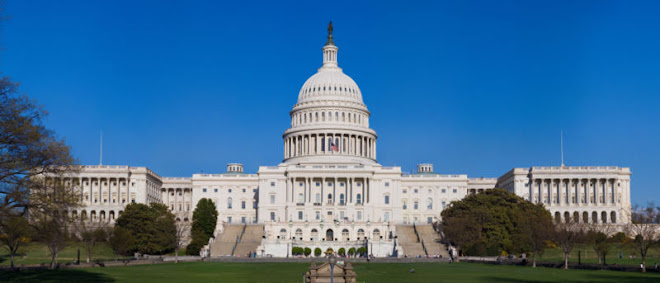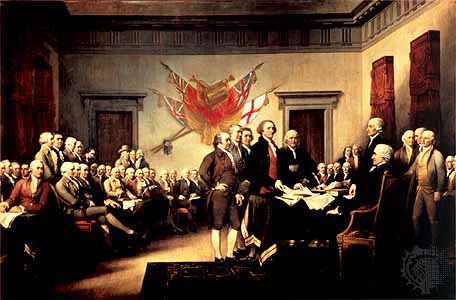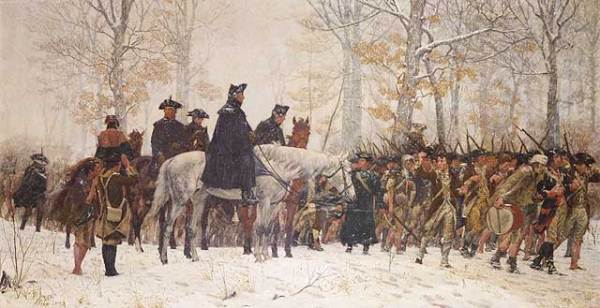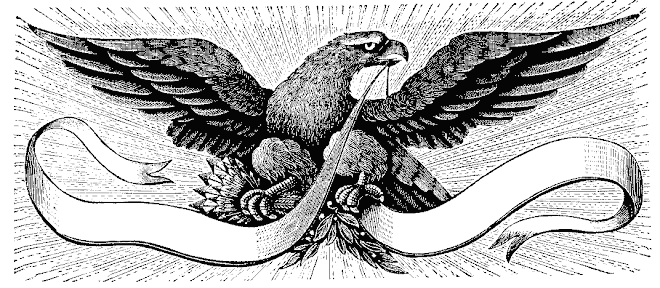From the Business and Media Institute:
Labor Day Special: Top 10 Union Highlights of the Obama Administration
Big Labor has reasons to celebrate: an ally in White House and a cheerleading left-wing media.
By Jeff Poor
Business & Media Institute
9/1/2010 2:29:53 PM
Jan. 20, 2009, was supposed to be the start of a new post-partisan political climate in Washington. To some journalists, that day was confirmation that a message had been sent that the people’s government had “declared independence” from special interests. New President Barack Obama had said months earlier that was what was wrong with Washington, and announced his intention to change it.
It’s now been one year, seven months and 12 days, and the “special interests” have been sent packing from Washington, right? Well, not exactly. In fact, not at all – if you define Big Labor as a special interest, which it is. Take Andy Stern, the former president of the Service Employees International Union (SEIU). During his tenure as the leader of that union, he was the most frequent visitor to the Obama White House.
On Labor Days past, we’ve seen a sort of labor union celebration, particularly from pro-union voices in the media. But in commemorating the 129th celebration of Labor Day in the United States, the Business & Media Institute has compiled the 10 top moments for Big Labor. Here are just the most obvious ways in which willing voices in the media and the Democratic leadership in Washington have joined forces to push a not-so-savory union agenda.
10. The Failed Push for Erroll Southers to head the Transportation Security Administration (TSA).
After the foiled terrorist plot by the Christmas Day bomber last year, some questions were raised about the Obama administration’s ability to keep the skies safe from terrorism. One question dealt with the unfilled position of the head of the TSA.
Why, in the midst of the war on terror, had it been unfilled for nearly a year of Obama’s first term? Because the administration had politicized the opening, promising to unionize the bureaucracy.
However, Sen. Jim DeMint, R-S.C., had demanded a recorded vote and a floor debate for confirmation of Obama’s nominee Erroll Southers over concerns that his stated intent to unionize the TSA could jeopardize airline security, as many experts had warned. Liberals like pro-union liberal radio and TV host Ed Schultz were irate that DeMint was keeping Southers from waltzing through confirmation.
“Sen. DeMint is the one that’s keeping Southers from being confirmed because he doesn’t like his position on unions,” Schultz said on his Jan. 4 MSNBC program. “See, it always comes back to the money, doesn’t it, folks? I don’t know what being a union supporter has to do with being qualified to protect America. If DeMint cared about security, you would think that he’d make sure that people protecting our airports are getting well paid. Like, maybe some health care, maybe some time off, maybe they’ll want to keep this job because it’s a good job.”
Southers later withdrew his nomination and DeMint explained his rationale for forcing a debate over the confirmation.
“So I think what I did has turned out to be the right thing, and the White House has a vetting problem, not just with this nominee, but others,” DeMint said on Fox News Channel’s Jan. 20 “Your World with Neil Cavuto.” “And so I think slowing it down and looking into it a little more was the right thing to do.”
9. Card Check Crash-and-Burn in the Arkansas Democratic Primary
Even a pro-union White House questioned the wisdom of this ingenious endeavor by labor to intervene in a Democratic Party primary. Early this year, in a contentious race for their party’s nomination, Sen. Blanche Lincoln and Arkansas Lt. Gov. Bill Halter faced off, with the issue of card check, or the Employee Free Choice Act as those on the left prefer to call it, at the forefront.
Long story, short – labor gambled $10 million in making card check the focal point and failed, earning the harsh criticism of an unnamed White House official, as Ben Smith of Politico reported on June 8.
"Organized labor just flushed $10 million of their members' money down the toilet on a pointless exercise," the official said to Politico. "If even half that total had been well-targeted and applied in key House races across this country, that could have made a real difference in November."
That comment wasn’t missed by lefty bomb-thrower Keith Olbermann. On his June 9 MSNBC program, Olbermann and WashingtonPost.com contributor Ezra Klein were befuddled as to why the White House would mention this publicly.
“They get a lot of pissed off progressives,” Olbermann said. “And Mr. [AFL-CIO spokesman Eddie] Vale spoke for us about this. What – is there any indication that anybody in the White House understands that they need – that they just created unnecessary damage and they need to repair it before they lose the last people who at the moment are still giving this president a kind of automatic benefit of the doubt?”
“Well, I’d say two things on that. One is that the president I think remains, you know, fairly popular,” Klein replied. “I don’t think he’s quite in that bad shape so – which is why they feel safe enough to do this with labor. This has not been an administration that has treated labor with kid gloves. In fact, the Employee Free Choice Act, which is what labor is so pissed off at Blanche Lincoln, has not been a priority of this administration.”
8. The Untold Story of State Debt and Unions
Many state governments are facing serious budget shortfalls as tax revenues have dwindled during the current economic slowdown. But some of these shortfalls, at least in part, could have been avoided if public-sector employee unions didn’t play such a dominant role in state fiscal issues, as a March 2010 Cato Institute report explained.
New York, California, New Jersey – are all states facing “Greek-Style” deficits, as a June 25 Bloomberg.com story described them, referring to that nation’s debt crisis. But as a report by Chris Edwards, the director of Tax Policy Studies at Cato Institute pointed out, these states all have high percentages of unionized state and local government employees (New York – 73 percent, New Jersey – 66 percent and California – 58 percent).
But you would never know there were structural issues with these states fiscal crises. Take the recent controversy with New Jersey Gov. Chris Christie and education in his state. He took a very tough line on how it should be handled and didn’t win many friends. However, some liberal outlets went after Christie because a flub in a federal education grant application and ignored why Christie had to make those tough choices to begin with.
MSNBC host Rachel Maddow attacked Christie on her Aug. 26 program but ignored the underlying problems with the teachers’ union influence, and not without making her own mathematical error.
Instead of sweating these bureaucratic procedures, the Cato Institute’s Edwards prescribes following the models of North Carolina and Virginia, which have been proven to be successful and limit union activity in state government.
“State governments should ban collective bargaining in the public sector, following the successful policies of Virginia and North Carolina,” Edwards wrote. “With the many large fiscal challenges facing governments—such as huge pension funding gaps—policymakers need flexibility to make tough budget decisions.”
7. Lame-Duck Pension Bailout
There are several things the lame-duck Democrats would push to pass after the November election, should they suffer major losses. One hardly mentioned is some sort of pension bailout, now that the accounting rules from the Financial Accounting Standards Board (FASB) are changing.
Although the mainstream media has really tackled the ideas of what could happen in a lame-duck session, Connie Hair explained for Human Events on Aug. 23, this rule change would effectively make several pensions underwater.
“The proposed FASB rules would require a company to report as a liability on its books the amount of the withdrawal penalty from its union multiemployer pension plan,” she wrote. “The penalties are pricey. One of the largest of these multiemployer funds, Central States Funds, is in such bad shape that UPS paid a $6.1 billion penalty to extricate itself from employee participation in the fund. The current unreported liability has long been cause for concern as in some cases the amount of the withdrawal penalty exceeds the value of company assets.”
But how would this problem be solved? Sen. Bob Casey (D-Penn.) and Rep. Earl Pomeroy (D-N.D.) have proposed legislation in their respective chambers of Congress to bail out union pensions.
“The Casey and Pomeroy bills would inaugurate the use of taxpayer dollars to guarantee the minimum benefits -- which Casey’s bill ups to $21,000 annually -- creating incentives for the multiemployer union pension fund trustees to dump the plans on taxpayers,” Hair wrote.
What’s that total? Try a $167 billion according to Moody’s Investors Service.
6. ‘Thuggish’ SEIU-ACORN ties ignored
Remember the ACORN follies nearly a year ago? The group, which stands for the Association of Community Organizations for Reform Now, launched massive voter registration efforts during the 2008 presidential campaign and has in part been credited for helping Barack Obama win that election before becoming mired in scandal. But what about its ties to Big Labor?
This went ignored by the network media, as BMI’s Julia A. Seymour pointed out in a Nov. 19, 2009 Newsbusters.org post, and a May 21 op-ed written by The Wall Street Journal’s John Fund asked that question and urged the media to take a closer look at it. In fact, Fund argued the two go hand-in-hand, referencing a 2009 incident which a tea party protestor was assaulted by SEIU members.
“The SEIU's close ties to the discredited group Acorn have largely been ignored. The same is true for the violence perpetrated by some of its members,” Fund wrote. “Last August in St. Louis, tea party supporter Kenneth Gladney was set upon by SEIU members during a town-hall meeting on health care. They were apparently angry that an African-American was supporting the tea party and hurled the ‘n’ word at him while beating him to the point where he required hospitalization.”
Imagine if that had happened at a tea party or Glenn Beck-led rally. How differently would the media have covered it? And the SEIU-ACORN association – how come it hasn’t gotten as much attention as the left has devoted to the new bogeymen, the Koch brothers?
5. SEIU-White House Coziness
As for SEIU, how close is this institution to the Obama administration? According to the White House visitor’s log, pretty close – former SEIU President Andy Stern’s 22 visits were the most by any individual to the Obama White House during 2009.
However, this has paid off well for the SEIU, according to the Heritage Foundation’s Rob Bluey, who wrote about one of the numerous inroads the union has made in a March 29 post on the Heritage Foundation’s blog:
While most Americans were enjoying a weekend away from work, President Obama kept busy Saturday afternoon, appointing one of Big Labor’s lawyers to a post at the National Labor Relations Board.
The recess appointment of Craig Becker was expected—despite the Senate’s bipartisan rejection of him in February. The White House knew media coverage would be minimal on the weekend, but Becker can’t escape the scrutiny. (Heritage’s Ryan O’Donnell wrote about the controversial pick last week.)
Prior to his appointment, Becker served as associate general counsel to the Service Employees International Union. The union, which spent an estimated $66 million in 2008 for Obama’s election, has been rewarded dearly for its support. Becker is the third SEIU leader tapped for a post by Obama.
This recess appointment was hailed by Lawrence O’Donnell, who will have a new MSNBC show, “The Last Word” premiering in late September. He cited the previous administration’s use of recess appointments as being justification for Becker’s appointment.
“[T]he Republicans saw this coming,” O’Donnell said. “They actually tried to prevent the Senate from going into recess last week with some parliamentary maneuvers that were hopeless, and they knew they were hopeless. They knew this was coming. The number was very carefully chosen, 15, to match exactly the number President Bush had at this point in his presidency.”
Interestingly, in 2006, The New York Times was very critical of Bush’s use of the recess appointment, calling it an exhibition of “a grandiose vision of executive power.” The Times editorial board didn’t address Becker’s appointment with the same criticism in 2010, however.
4. Special Session: Teachers Union Bailout
It took some heroics from House Speaker Nancy Pelosi to pull this off – at least that’s how it was reported. During an emergency August session of Congress, the House approved a $26.1 billion “federal aid” package, largely upon party lines 247-161. This won the praise of MSNBC’s Rachel Maddow on her Aug. 10 broadcast since it according to the Obama administration claimed it earmarked $10 billion in education spending and would save the jobs of 160,000 teachers.
“Luckily, today, brains got some badly need reinforcements,” Maddow said. “The House passed a $26 billion state aid package that will keep tens of thousands of teachers from losing their jobs. The bill was then immediately signed into law by President Obama. In the war on brains, brains are getting some reinforcements.”
But the math doesn’t add up, according to the Heritage Foundation’s Conn Carroll. In an Aug. 11 post on the Heritage Foundation’s blog, he explained it was in fact a payout to the unions to make sure there’s no shortfall in union dues.
“The unions claim that the $10 billion public-education bailout would save 100,000 teaching jobs,” Carroll wrote. “That means taxpayers will be paying $100,000 per job — nearly double the national average for teacher salary, $54,000. Moreover, the U.S. Census Bureau estimates that about 57 percent of teachers are unionized. Using a conservative estimate of $300 in annual dues paid, the NEA and AFT have a minimum of $24 million in dues at stake. It is that $24 million in union dues revenue, not your children’s education, that this bailout is really about.”
3. Special Treatment for Unions in ObamaCare
One of the most controversial debates throughout 2009 and into 2010 was about ObamaCare, and labor unions played a big role, pushing for special treatment since many union gold-plated health care plans would be susceptible to what is known as a “Cadillac” Tax.
However, labor caught a break with carefully crafted exemption that targeted some groups (small business and individuals) while protecting others (big business and labor unions.) According to Dan Danner, president and CEO of the National Federation of Independent Business (NFIB) the new health care law hits certain plans, which differ based on what entity provides them.
“One of these new taxes is a so-called health insurance fee,” Danner wrote in the Wall Street Journal on May 27. “It's a massive $8 billion tax (that escalates to $14.3 billion by 2018) on insurance companies based on their market share. This tax will be paid almost exclusively by small businesses and individuals because the law specifically excludes self-insured plans, the plans that most big businesses and labor unions offer, from having to pay the tax.”
And Bush tax cuts for “the rich” seem unfair?
2. Union donations – 10 of 20 Top Contributors are Unions and the Bulk Goes to Democratic Candidates
Who really wields influence in the nation’s capital? If you’re basing it on raw campaign cash, a case could be made not for a specific industry like big oil, big pharma or Wall Street. Those all play a role in the campaign financial contribution game, but not nearly the role labor does.
There seems to be selective examination of political contributions by the mainstream media. Take, for example, the revelations Rupert Murdoch’s NewsCorp gave $1 million to the Republican Governor’s Association. Although the holding companies of the broadcast networks have overwhelmingly given to Democratic politicians as well, their attacks on Fox News took precedence over any scrutiny the role big labor plays in political campaigns,
The Center for Responsive Politics’ website OpenSecrets.org has compiled the top 129 contributors dating back to 1989. However, 12 of the top 20 biggest contributors are labor unions, which gave a combined total of more than $360 million.
Sounds like a lot? It is, considering that 95 percent of that money went to Democratic candidates, according to the site. With a massive decline union membership to just 12.3 percent of the workforce,e according to a U.S. Bureau of Labor Statistics Report released earlier this year, it’s pretty clear union labor don’t represent the wide swath of America and are safely deemed a “special interest.”
1. Automaker Bailout or UAW Bailout?
This is another one of those tragedies that perhaps could have been prevented, had labor unions conceded that the free-market had made American automakers uncompetitive with the rest of the world.
With higher labor costs, the American automakers had been walking a very thin line for many years. But with the financial collapse in 2008, two of the automakers could no longer even exist without some government intervention. Using the loosely devised rules of the 2008 TARP legislation, the U.S. Treasury stepped in and the taxpayers, along with the UAW, would become owners of what would be known as “Government Motors” and Chrysler.
But the blame isn’t President Obama’s alone. The Bush administration and the opened the door to a loan of TARP funds to the beleaguered automakers GM and Chrysler. And Obama, appearing on the Michael Smerconish radio program on Aug. 20, 2009 sidestepped responsibility for the bailout.
“The auto interventions weren't started by me – they were started by a conservative Republican administration,” Obama said. “The only thing that we did was rather than just write GM and Chrysler a blank check, we said, you know what, if you're going to get any more taxpayer money, you've got to be accountable. They went through a record bankruptcy, and now GM for the first time is actually hiring folks back.”
But nearly a year later Obama was making a victory lap in the name of this bailout policy. In a speech in Chicago on Aug. 5, the president lauded the comeback of the industry at a Ford plant, even though that particular maker didn’t take bailout money.
"There are a lot of folks who were ready to write off the American auto industry," he said. "But you know what, that's not how you build a better future … I refused to walk away from this industry."
Earlier this year, GM was running TV spots boasting how they had repaid the taxpayer. That wasn’t the exactly the truth. GM had repaid a portion of the loan. and how did the media respond? Without much reaction at all, as the Business & Media Institute story explained on May 5:
That advertisement (Watch it here) gives the impression that A) GM is financially stable and able to repay its debts B) the government bailout was the right decision. And that was exactly how the Obama administration and network news media celebrated GM’s loan repayment of a $6.7 billion government loan.
But the ad is heavy on spin, according to The New York Times and Reason online. The Times reported that GM did make a repayment settling the $6.7 government loan, but it did so using TARP money held in escrow by the Treasury Dept.
And another, more fundamental question was ignored throughout the process. What was what that the real rationale for bailing out GM and Chrysler? Was it to make the American auto industry “great” again? Not according to some. Had federal government not stepped in, the UAW’s pension would have been underfunded by $17 billion. As Sweetness & Light detailed, the taxpayer is now fulfilling these obligations, in part.
“As we have noted numerous times, saving the UAW’s pension fund was the real raison d’être for the automakers bailout in the first place,” the April 7 post said. “And, as we have also mentioned, the just enacted ‘healthcare reform’ legislation includes a discreet injection of $10 billion into the UAW’s pension fund. And still they want more. Lest we forget, Mr. Obama drove these car companies into bankruptcy. And he personally oversaw their restructuring. And yet GM and Chrysler are in the same position they were before, or even worse. Oh, except that now the US taxpayer is on the hook for the UAW’s pension fund.”
A READER ON THE STATE OF THE POLITICAL DECAY AND IDEOLOGICAL GRIDLOCK BETWEEN ONE GROUP WHO SEEK TO DESTROY THE COUNTRY, AND THOSE WHO WANT TO RESTORE IT.
The Rise and Fall of Hope and Change




Alexis de Toqueville
The American Republic will endure until the day Congress discovers that it can bribe the public with the public's money.
Alexis de Tocqueville
Alexis de Tocqueville
The United States Capitol Building

The Constitutional Convention

The Continental Congress

George Washington at Valley Forge



No comments:
Post a Comment